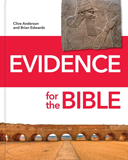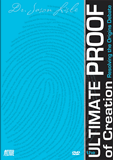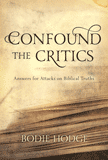
Truth Everyone Can See
Bible Interpretation
“Scripture is so hard to understand. How can anyone be sure they understand it correctly?” Tell that to William Tyndale—or the apostles—and see what they say!
With the passing of time, famous lines from church history frequently fall into oblivion. Do you have any idea who spoke the following words . . . and why?
“I defy the pope and all his laws, and if God spares my life, I will make the boy that drives the plough know more of the Scripture than you do.”
William Tyndale was defending the right of every Christian to read the Bible for himself. Unfortunately for him, first amendment rights were not yet established. Tyndale was eventually incarcerated, strangled, and burned at the stake for his audacious convictions.
What raised the anger of the medieval church to such a feverish pitch? Simply this: Tyndale understood from the pages of the Bible that its clarity, sometimes known as the perspicuity of Scripture, was a liberating force. He maintained that the Bible is clear when it pertains to its central message of redemption. He saw the need to “set God’s Word free” from the clutches of the religious cultural elite, and Tyndale knew this effort would shake the foundations of his world.
Despite murderous opposition, he translated most of the Bible from the ancient languages into the language of the common man, and thus emancipated the gospel as an unstoppable force.
Clarity—Essential to Saving Faith
The Reformers, first and foremost, gave their lives for the supremacy of the Scriptures over the prevailing traditions of their day. Often this is referred to as Sola Scriptura (“the Scriptures alone”; see 2 Timothy 2:15, 3:16; Colossians 2:8). This doctrine was followed by Sola Fide, that is, “the just shall live by faith” (see Ephesians 2:8; Hebrews 10:38), and then by the supremacy of the common believer over an exclusive priesthood (Philip Schaff, History of the Christian Church, vol. 7, p. 16; see 1 Peter 3:9; Revelation 5:10).
These doctrines work together. The average person’s ability to understand Scripture by faith alone is closely tied to perspicuity, and this doctrine continues its importance into our day. “In the context of the Reformation, the perspicuity of Scripture was the chief weapon for combatting the authority of the dominant interpretive community: Rome” (Kevin Vanhoozer, Is There a Meaning in This Text? p. 315).
Sometimes the things more easily understood can fall victim to our own prejudices.
Historic doctrinal statements of major Protestant denominations—Lutherans, Presbyterians, Reformed, Congregationalists, Baptists, and others—all echo the refrain that the Scripture is self-authenticating to the sincere, searching heart in matters pertaining to redemption and personal growth in godliness.
Consider just one example from the Westminster Confession of Faith (1646; repeated word for word in the London Baptist Confession of 1689): “All things in Scripture are not alike plain in themselves, nor alike clear unto all; yet those things which are necessary to be known, believed and observed for salvation, are so clearly propounded and opened in some place of Scripture or other, that not only the learned, but the unlearned in a due use of the ordinary means, may attain to a sufficient understanding of them.”
Inherent in Scripture is its perspicuity, or clarity, regarding its central and fundamental message. Scripture, being God-breathed, was intended by the divine Author to be read and understood by the common man, not exhaustively or comprehensively, but nonetheless, truly, in its core communication. The Reformers were not blind to the fact that some men will have “better understanding” than others for various reasons, but this does not affect central doctrines of salvation.
Clarity Illustrated by “One Mediator”
A simple exercise will illustrate this point. We read in 1 Timothy 2:5 the following: “There is One God and one mediator between God and man, the man Christ Jesus.”
First, it’s important to agree on a good working definition of mediator, and both Protestants and Catholics should have no problem with this definition: “A mediator is a person who holds a favorable position between parties at variance, and can therefore interpose between them as equal friends of each” (John A. Hardon, Catholic Catechism, p. 165).
This definition wonderfully points to Christ. The parties at variance are God and man. We are all born with a clenched fist toward our Maker. The Bible follows with a beautiful description of Christ’s work on the Cross.
“For if when we were enemies we were reconciled to God through the death of His Son, much more, having been reconciled, we shall be saved by His life, and not only that, but we also rejoice in God through our Lord Jesus Christ, through whom we have now received the reconciliation” (Romans 5:10–11).
This is the glorious message of the Reformation and of the Scripture.
But Rome would go on to quote the Catholic Catechism: “Nonetheless, lesser and subordinate mediators are not excluded . . . . It is in this context that the Blessed Virgin enters as mediatrix par excellence. We presume that she co-operated fully with the graces she received, to save her own soul. But she mediated for others as well, by her vicarious assistance to the rest of mankind” (p. 166).
Question: Is perspicuity destroyed if Mary as “mediatrix” shares in the mediatorial work of Christ? Yes, without a doubt. This is so important a principle that the eternal destiny of the soul hangs on it. Mediation in Scripture is the exclusive work of Christ. God’s Word states with clarity, “When He had by Himself purged our sins [He] sat down at the right hand of the Majesty on high” (Hebrews 1:3, emphasis added).
The only possible way that the One Mediator can become two or more is if the Bible’s perspicuity is ignored or trumped by another authority. Without perspicuity the Bible’s authority is undermined, and the gospel of Christ is endangered and becomes a false message. At this point it must be emphasized that the Bible has crystal clarity to the searching heart because it ultimately comes from the Mind of One who does not contradict Himself.
God made sure such issues were stated clearly because the fundamental message of the Scripture is redemptive. A person may gain an enlightened view of biblical minutiae like “the wells of Samaria” through rigorous study of archaeology, but Jesus’s words bring into focus God’s real purpose for perspicuity: “Whoever drinks of the water that I shall give him will never thirst” (John 4:14). Perspicuity has to do more with spiritual transformation than with education.
So many texts of Scripture underscore the principle of clarity that it is difficult to choose one. However, verses that compare the Bible to “light” are hard to resist. Peter suggests that even the most glorious of all experiences—being an “eyewitness of God’s majesty”—pales into insignificance compared to the glory of the light of Scripture shining into our hearts:
“We have the more sure prophetic word, which you do well to heed as a light that shines in a dark place, until the day dawns and the morning star rises in your hearts: knowing this first, that no prophecy of Scripture is of any private interpretation, for prophecy never came by the will of man, but holy men of God spoke as they were moved by the Holy Spirit” (2 Peter 1:19–21).
The Light of God’s Word
“This commandment which I command you today is not too mysterious for you, nor is it far off.” Deuteronomy 30:11
“The testimony of the Lord is sure, making wise the simple.” Psalm 19:7
“Your word is a lamp to my feet and a light to my path.” Psalm 119:105
“We are not writing any other things to you than what you read or understand.” 2 Corinthians 1:13
“From childhood you have known the Holy Scriptures, which are able to make you wise for salvation.” 2 Timothy 3:15
Larger Scope
The subject at hand goes far beyond the scope of this article. Many good Christian brethren do not accept the doctrine of perspicuity in practice. They fill pulpits every Sunday and claim to embrace this principle of biblical clarity, yet they differ from other believers on foundational tenets such as the straightforward reading of Genesis 1–11. Admittedly some things in Scripture are “hard to be understood,” but sometimes the things more easily understood can fall victim to our own prejudices.
There is one thing upon which most will agree. How often have we heard the testimony of a man who is at his wit’s end in a motel room, reads a Bible from the bedside table, and sees the glory of God in the face of Jesus Christ? The clarity of God’s written word burns into his soul, and in repentance and faith he embraces the central message that Christ came into the world to save sinners.
In demonstration of the power of a changed life, this man returns home to his family as a converted man. He unwittingly testifies to the perspicuity—the crystal clarity—of Scripture, in such a way that he can say, “I once was blind, but now I see.”
Answers Magazine
October – December 2014
This issue explores the marvelous human immune system. Plus take a look at the Creation Museum's new Allosaurus.
Browse Issue SubscribeRecommended Resources

Answers in Genesis is an apologetics ministry, dedicated to helping Christians defend their faith and proclaim the good news of Jesus Christ.
- Customer Service 800.778.3390
- © 2024 Answers in Genesis






